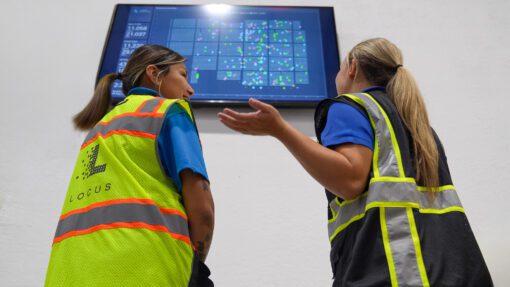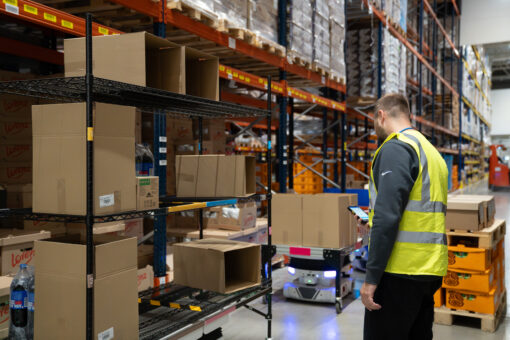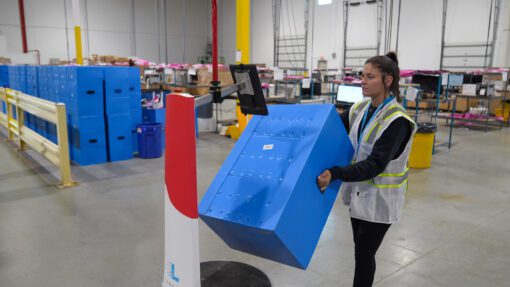WP: How to achieve 400 UPH with Locus Fast Pick
WP: How to achieve 400 UPH with Locus Fast Pick Download Now!
Common Problems & Solutions to Warehouse Manager Misery
Mary Hart, Sr. Content Marketing Manager

The pandemic has led to a surge in e-commerce growth and a higher demand for quicker product delivery. This has made warehouses more crucial in the supply chain.
Warehouse managers are under a lot of pressure every day to make sure things run smoothly, save money, and meet deadlines. They also have to deal with high turnover and other labor issues. Lots of managers feel overwhelmed and unhappy, maybe that's why you searched for this blog.
I can’t offer you an Advil for your headache, but I can show you that you’re not alone in your warehouse woes. I’ll provide insights into warehouse problems and solutions to help ease your management challenges.
5 Reasons for Warehouse Managers’ Misery: Warehouse Management Problems (and Solutions):
Ever-growing demands: The surge in e-commerce orders means that there are more products that you need to stock, track, pick, pack, and ship than ever before. Meeting these demands requires meticulous planning and resource allocation. And that doesn't even address seasonal demands.
Human resource challenges: Warehouses often have high turnover rates, requiring constant training of new personnel if you can even find new people to hire. Additionally, you have to grapple with scheduling shifts, worker safety, and handling interpersonal conflicts.
Mistakes and inefficiencies: Manual processes are prone to errors. A mispicked item or inaccurate inventory levels can snowball into delayed shipments, customer complaints, and returns, all of which impact your bottom line and customer satisfaction.
Space constraints: With the increasing volume of goods, many warehouses are running out of vertical space. Efficient space utilization becomes a constant puzzle for managers.
Pressure to cut costs: Amidst all these challenges, there is the ever-present mandate to reduce your warehouse’s operational costs and improve margins.
So, what’s the solution? It’s not hiring more people because you can’t do that, and it’s not over-working the workers you do have. It’s augmenting the workers you do have and making their lives – and your life – better.
You need warehouse automation to help you with your warehouse and fulfillment center woes — and specifically robots in the form of autonomous mobile robots (AMRs).
Fix Your Warehouse Woes with Robotic Automation
Automation, particularly through robotics, is fast emerging as the way to help managers save their sanity (there won’t be any “Here’s Johnny” moments through a warehouse door) while also working to optimize operations, reduce costs, and enhance efficiency.
Precision and Accuracy: In the demanding world of warehousing, mistakes can have cascading effects on your entire supply chain. Enter automation — when AMRs work alongside their human coworkers and provide detailed information on items (including pictures) to be picked or putaway, impeccable accuracy occurs. This results in a sharp decrease in human errors, ensuring shipments are always accurate and eliminating the subsequent headaches of returns and customer satisfaction.
Efficient Warehouse Space Utilization:
Warehouses, especially in prime locations, can be expensive to maintain. Making optimal use of every square inch becomes critical and if you can’t build out or move to a new location, you can go vertical with mezzanines and pick towers. With the agility of AMRs, navigating tight and very narrow aisles becomes a breeze.
The outcome? Your warehouse can store more goods and manage inventory more efficiently without needing to expand your footprint.
Increased Throughput: E-commerce has brought along the challenge of rapid order fulfillment and robots working alongside humans are perfectly poised to meet this challenge. With the addition of AMRs to handle walking and carrying, human workers can do work faster and improve both productivity and cycle times.
Reduction in Labor Challenges: The warehousing industry often grapples with high turnover rates and the physical toll of push-pull injuries that tasks can take on human workers. AMRs take on the physically demanding tasks to reduce the strain on human workers. By doing so, they not only lower the risk of injuries but also enhance employee morale, addressing the issue of high turnover.
Scalability for the Future:
The warehouse and fulfillment center landscape is ever-evolving, with periods of growth and expansion. Traditional warehousing solutions can often become a bottleneck during these phases and don’t provide any flexibility for scale. However, with automation and AMRs, scaling up becomes an easier endeavor. As your business grows, integrating more robots into the operations, which can quickly be done with robots-as-a-service (RaaS), can enhance your warehouse’s capabilities without a need for drastic infrastructural changes.
As a warehouse manager, you have a full plate – in fact, it can often feel like it’s overflowing. When you combine the everyday challenges of warehouse management with the increasing pressures of modern commerce, it can make your role overwhelming. However, warehouse automation, and AMRs in particular, offers a promising solution to many of these issues.
By leveraging AMRs and the Locus Solution from Locus Robotics, your warehouse can be transformed into a streamlined, error-minimized facility that retains employees while improving productivity and daily operations. Locus' automated systems of bots integrate seamlessly with warehouse management systems (WMS).
With automation and robotics, you’ll be able to navigate your current warehouse issues and problems (without having to reach for an aspirin), and your facility will be better equipped for the peaks and valleys of the warehouse world. Talk to us to learn how the Locus solution can help reduce commone warehouse problems and help you sleep better at night, knowing that your warehouse is running like a well-oiled machine.





